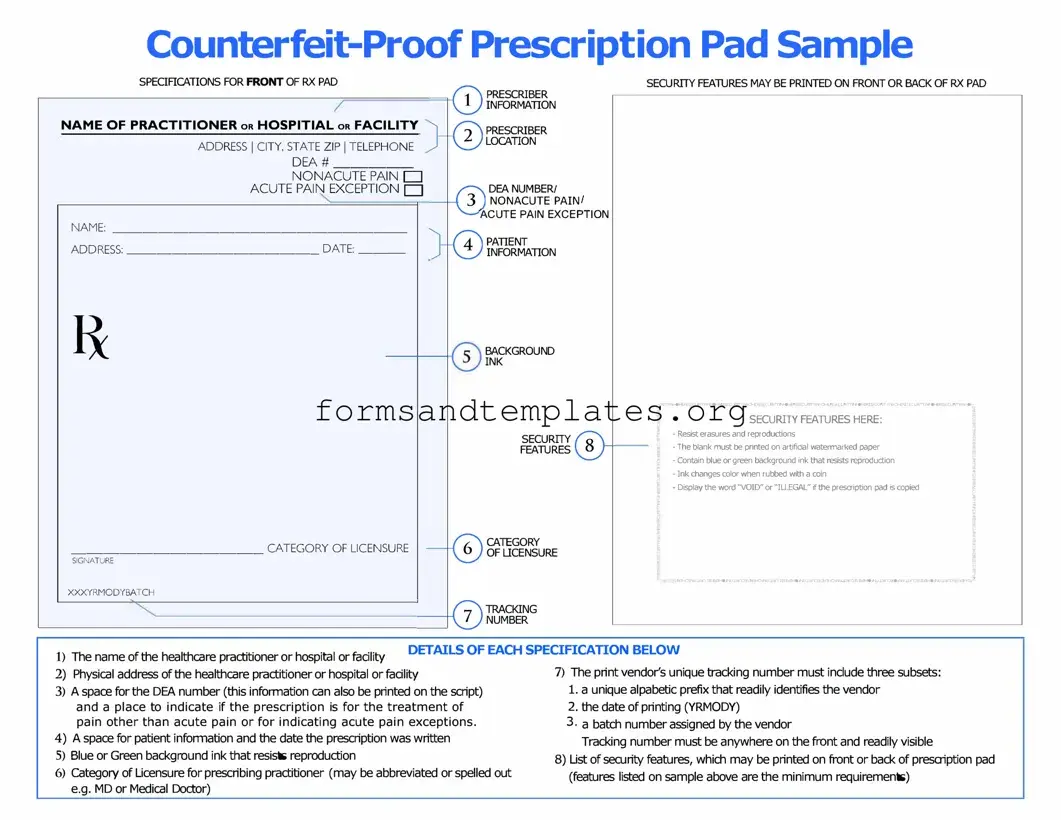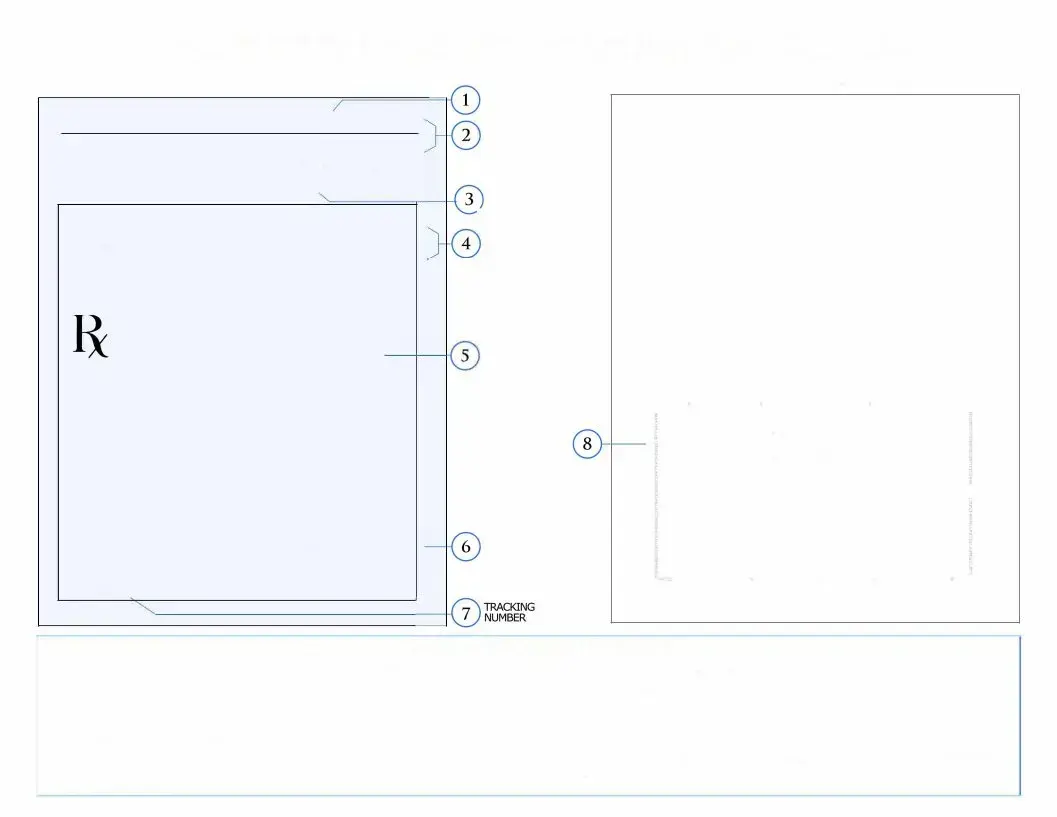A Prescription Pad form is a document used by healthcare providers to prescribe medications to patients. It typically includes the provider's information, the patient's details, and the specific medication being prescribed, along with dosage and instructions for use. This form serves as a legal document that authorizes a pharmacy to dispense the medication.
Only licensed healthcare professionals, such as doctors, nurse practitioners, and physician assistants, can issue a Prescription Pad form. Each state has specific regulations regarding who is authorized to prescribe medications, so it’s essential to be aware of local laws.
The following information is typically required:
-
Provider’s name, address, and contact information
-
Patient’s name and date of birth
-
Medication name, dosage, and quantity
-
Instructions for use
-
Provider’s signature
-
Date of the prescription
Including accurate information helps ensure that the patient receives the correct medication and dosage.
Yes, a Prescription Pad form can be used for controlled substances, but there are stricter regulations governing their prescription. Providers must comply with federal and state laws, which may require additional information, such as the patient’s medical history or specific identification numbers.
The validity of a Prescription Pad form depends on the type of medication prescribed and the regulations of the state. Generally, most prescriptions are valid for 1 year from the date they are written. However, controlled substances may have shorter validity periods, often ranging from a few days to 6 months.
While the prescriber must sign the Prescription Pad form, administrative staff may assist in filling out the form with the prescriber’s instructions. However, the prescriber’s signature is essential for the prescription to be valid.
If a Prescription Pad form is lost, the prescriber should notify their office and possibly the local pharmacy. They may need to issue a new prescription to ensure the patient receives their medication without delay. Additionally, it’s wise to keep a record of the lost prescription to prevent misuse.
Yes, many states allow electronic prescriptions, which can be sent directly to a pharmacy. This method enhances convenience and reduces the risk of errors associated with handwritten prescriptions. However, providers must comply with specific regulations and use secure electronic systems to ensure patient confidentiality.
If you notice any errors on a Prescription Pad form, such as incorrect medication or dosage, do not attempt to fill it. Contact the prescriber immediately to clarify and correct the information. Ensuring accuracy is crucial for patient safety.
Are there any special considerations for prescribing to children?
When prescribing to children, providers must consider several factors, including weight, age, and the potential for side effects. Dosing may differ significantly from adults, so careful calculations and considerations are necessary. Additionally, parental consent may be required for minors.

